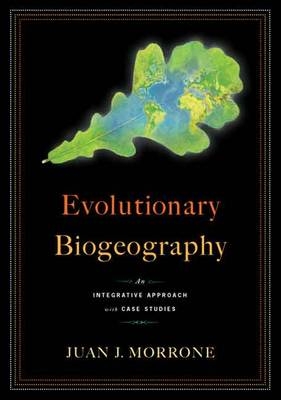
Evolutionary Biogeography
Columbia University Press (Verlag)
978-0-231-14378-3 (ISBN)
Finally, available geological knowledge can help construct a geobiotic scenario that may explain how analyzed areas were put into contact and how the biotic components and cenocrons inhabiting them evolved. Morrone compares these methods and employs case studies to make it clear which is best for the question at hand. Set problems, discussion sections, and glossaries further enhance classroom use.
Juan J. Morrone is professor of biogeography, systematics, and comparative biology at the Facultad de Ciencias, Universidad Nacional Autonoma de Mexico (UNAM), Mexico City. He is the author, coauthor, editor, or coeditor of twenty-one books and two hundred scientific papers on biogeography, systematics, biodiversity, and evolution.
Preface 1. Introducing Evolutionary Biogeography 2. Basic Concepts 3. A Brief History of Evolutionary Biogeography 4. Identification of Biotic Components 5. Testing Relationships Among Biotic Components 6. Regionalization 7. Identification of Cenocrons 8. Construction of a Geobiotic Scenario 9. Toward an Integrative Biogeography References Case Studies 4.1. Biogeography and evolution of North American cave Collembola 4.2. Distributional patterns of Mexican marine mammals 4.3. Biogeography of the Subantarctic islands 4.4. Biogeography of the Sierra de Chiribiquete (Colombia) 4.5. Biogeography of the Mexican cloud forests 4.6. Distribution of butterflies in the Western Palearctic 4.7. Areas of endemism in southern South America 5.1. Cladistic biogeography of Central Chile 5.2. Cladistic biogeography of afromontane spiders 5.3. Biogeographic history of the North American warm desert biota 5.4. Cladistic biogeography of the "blue ash" eucalypts 5.5. Biogeography of South American assassin bugs (Hemiptera) 5.6. Biogeography of plant and animal taxa in the Southern Hemisphere 5.7. Biogeography of the Northern Andes 5.8. Biogeography of Rhododendron section Vireya in the Malesian Archipelago 5.9. Historical biogeography of the Subantarctic subregion 5.10. Cladistic biogeography of the Hawaiian islands 5.11. Dispersal of hominines in the Old World 6.1. Regionalization of Latin America 7.1. Dinosaurian biogeography 7.2. Phylogeography of red deers in Eurasia 7.3. Phylogeographic predictions of a weevil species of the Canary Islands 7.4. The Mediterranean Lago Mare theory and the speciation of European freshwater fishes 7.5. The arrival of caviomorph rodents and platyrrhine primates in South America
| Erscheint lt. Verlag | 26.12.2008 |
|---|---|
| Zusatzinfo | 4 halftones, 0 color illus., 97 line drawings, 3 tables |
| Verlagsort | New York |
| Sprache | englisch |
| Themenwelt | Naturwissenschaften ► Biologie ► Evolution |
| Naturwissenschaften ► Biologie ► Ökologie / Naturschutz | |
| ISBN-10 | 0-231-14378-8 / 0231143788 |
| ISBN-13 | 978-0-231-14378-3 / 9780231143783 |
| Zustand | Neuware |
| Haben Sie eine Frage zum Produkt? |
aus dem Bereich


